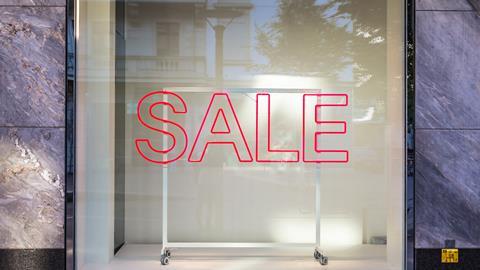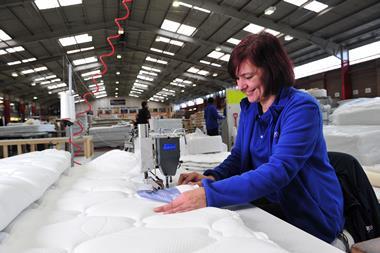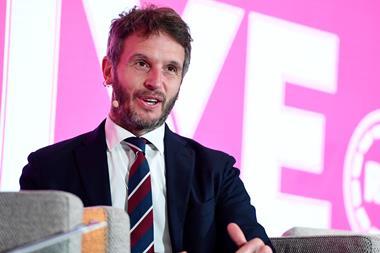These are dark times for Black Friday. With the threat of a recession growing with every government U-turn and consumer confidence plumbing historic lows, retailers are facing the event – and the crucial golden quarter – firmly on the back foot

With global financial instability, 2022’s Black Friday will take place against a bleak background for UK consumers.
The ongoing cost-of-living crisis has fundamentally changed Britain’s spending habits. New data from Barclaycard shows that fear about surging energy bills means more than half of consumers are planning on cutting down discretionary spending, with 60% reducing the amount they spend on eating out and 59% cutting back on buying new clothes.
But how will this affect the way shoppers behave across Black Friday? What are retailers planning to do about it? And are there any bright spots to be found?
IMRG strategy and insight director Andy Mulcahy has produced a sales forecast across retail categories for the period, which he says makes for “pretty bleak reading”.
Across all categories, IMRG is forecasting that total Black Friday sales will be down 5% compared with pre-pandemic figures. While there are numerous factors for this, Mulcahy blames what he calls retail’s “pretty crap summer”.
“The summer was really bad,” he adds. “Consequently, retail is further behind where it wants to be at this time of year traditionally, before Black Friday and then the big elevation into Christmas.
“Retailers are going to need a bigger jump into October and November than they would normally get. Everything is so volatile at the moment, it’s hard to see that happening.”
Christmas comes early
Despite the doom and gloom, some retailers are optimistic that customers will look to the Black Friday period to get value for money and spread the cost of their Christmas spend.
An insider at one discounter forecasts 20% sales growth in the fourth quarter, making it their “biggest Christmas ever” across food and general merchandise.
This trend will be seen across all categories. A spokeswoman for Argos says the retailer will be focusing its Black Friday messaging this year around easing the financial strain customers are feeling.

“We know this year has been tough for customers and we expect them to be looking forward to Black Friday to bag some bargains. It will be an opportunity to tick people off their Christmas gift list and make their budget go further at the same time.”
A bargain Black Friday, with an eye to keeping Christmas costs down, resonates with Retail Economics chief executive Richard Lim.
He expects more traditional Black Friday winners such as fashion, electricals and toys to “see benefit”. In terms of trends, he predicts that younger shoppers will take part more than their older cohorts and insists spending will be confined “predominantly online” despite stores being open and the UK free of the threat of any new Covid-19 variants.
The fact that Covid has effectively diminished as a concern among the public will have an effect, as Boots boss Sebastian James explains: “We think it’ll be our biggest [Black Friday] ever. Last year, just as we went to Black Friday, Omicron was happening and as a result lots of people stayed home self-isolating, so we found that we saw this enormous surge of demand online.
“Because it was so sudden, we couldn’t meet it and had long delivery times. This year, customers can do whatever they like, we’ll be ready and we think there’s 6% or 7% of people we didn’t get last year that we can now.”
Margins versus bargains
With many retailers already promoting heavily through the summer and the prices of raw materials and products increasing, the need to strike a balance between meeting consumer demand for a bargain while protecting margins has rarely been more important.
In that vein, at least one major fashion retailer is looking to protect its margins by avoiding Black Friday promotions on its core ranges.
“We don’t tend to do Black Friday because it dilutes our brand and what the customers expect from us,” says an insider at the brand. “We always look to sell our core products at full price, so discounting for Black Friday isn’t good practice. The only products we’d discount are outside those core ranges, maybe in styles or colours that aren’t selling as well.”
Not all brands can afford to avoid the promotional event, however. For fashion retailer Crew Clothing margins can be protected by baking its Black Friday discounts into its buying model, allowing it to be more flexible given the unpredictability of costs.

“Black Friday is now an intrinsic part of the commercial calendar,” says chief executive David Butler. “We calculate it into our financial model and into our purchasing so it’s not a negative profitability perspective for us. We will repeat it this year on a like-for-like basis in terms of timing and discount level, and I can only base our trading assumptions on what we’ve seen this year so far.”
For other retailers, the tactic is to stay in it for the long haul. Boots is expecting this year’s Black Friday period to start slowly before building to a crescendo on November 25.
“Black Friday is now an intrinsic part of the commercial calendar”
David Butler, Crew Clothing
“Even though every day [of the month] we put a deal on and we guarantee it’s the best deal, nobody believes us until Black Friday itself when they go mad. So Black Friday and Cyber Monday will be the last drop of deals,” says James.
Another added complication will be a winter World Cup, which will see an England match take place on the day of Black Friday itself. With many consumers having bought new home electricals such as TVs and sound systems during the pandemic, Retail Economics’ Lim believes the World Cup will benefit grocery beyond any other channel.
Primed and ready
This year US retail giant Amazon has gone on an early price and promotion offensive, with the launch of its first-ever Prime Early Access Sale, which ran on October 11-12.
Prime Day is usually reserved for the summer, and the launch of the Prime Early Access Sale was seen as a warning shot across the bow of the wider retail sector ahead of Black Friday and the run-up to Christmas.
While Amazon has been somewhat vague about how the event went in terms of sales, UK country manager John Boumphrey offered some insight into the trends seen across the two days.
“Amazon’s first-ever Prime Early Access Sale saw tens of millions of Prime members take part globally. Not only were UK Prime members able to get ahead of their festive shopping, they saved over £35m in the 48-hour sales period,” he says.

“Members ordered more than 100 million items from Amazon’s selling partners around the world, most of which are small businesses and medium-sized businesses.”
Boumphrey says some of the best-performing items in the sales event in the UK were the Amazon Echo Dot, Shark cordless stick vacuums and Oatly oat milk.
For Retail Economics’ Lim, the fact Amazon felt the need to launch the event at all shows how bad the consumer outlook is in the UK and globally.
“It’s a strategy to try and get people to pull forward Christmas spending. Retailers know this is going to be a difficult year and customers are already spending earlier than usual on Christmas to spread out the expense. This is what Amazon is trying to capture and other retailers are following suit.”
Whether the event is a bellwether for how the rest of the golden quarter will play out remains to be seen, but the days of stampedes, crowd surges and scrambling for Black Friday bargains are long gone.
- Don’t miss the best of the week – sign up to receive the Editor’s Choice every Friday



























No comments yet